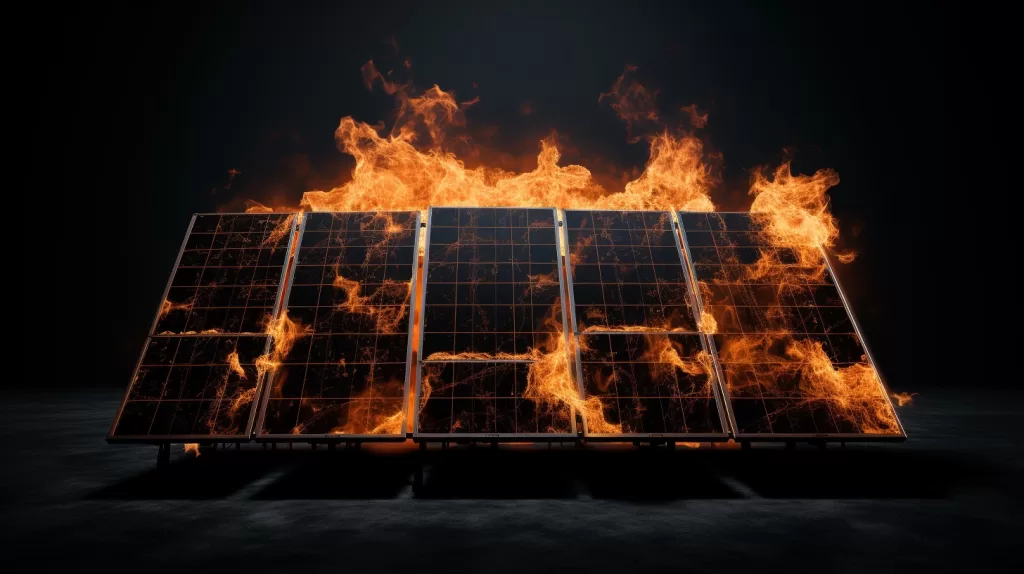Table of Contents
1. Fire Safety Challenges Amidst the Rapid Expansion of Photovoltaics in Europe
As photovoltaic systems are rapidly deployed across Europe, an increasing number of commercial buildings, residential properties, and even historical districts are actively adopting distributed PV systems. While this rapid development boosts the share of renewable energy, it also exposes a range of fire safety risks. In particular, with complex system integration, higher voltage levels, and dense module installations, the risks of fires caused by DC arc faults, module hot spots, and cable aging are steadily rising.
Some projects suffer from a lack of fire prevention considerations during the design phase, poor construction practices, and inadequate operation and maintenance, making it difficult to respond effectively once a fire breaks out. In countries with strict building fire safety standards, such as Italy and Germany, such incidents not only jeopardize the safety and operation of PV systems but may also trigger tighter regulatory controls and erode market trust. Therefore, as the industry promotes sustainable PV development, addressing fire risks at the source has become a critical and urgent challenge.
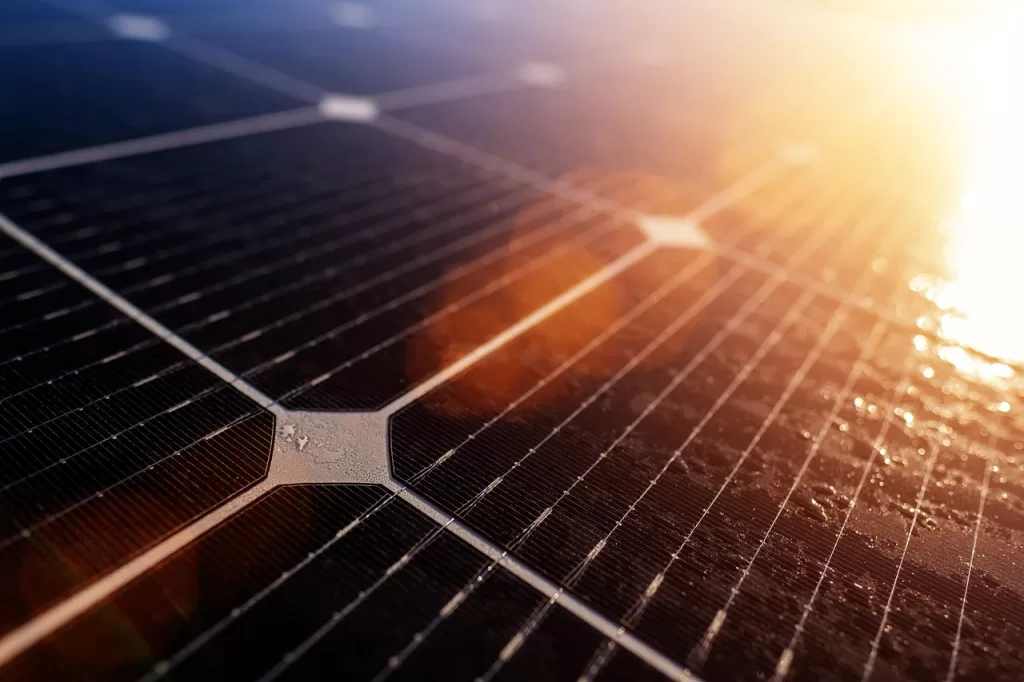
2. Analysis of Fire Risks in Photovoltaic Power Plants
2.1 High-Risk Areas: DC Systems and Aging Components
The main fire risks in PV systems are concentrated on the DC side. After modules are connected in series, system voltage typically ranges from 600V to 1000V. If any wiring becomes loose, poorly connected, or structurally degraded, high-temperature arcs can easily form, reaching temperatures over 3000°C. Typical risk points include:
-
Modules: During long-term operation, modules are prone to hot spot effects, especially in areas frequently shaded. Localized overheating can lead to backsheet damage or junction box failure. Poor-quality materials or defective encapsulation accelerate insulation aging and increase the risk of spontaneous combustion.
-
Connectors and Cables: MC4 connectors with poor crimping or aged materials can overheat and cause arcing. Improper cable routing, undersized wire gauges, or mechanical damage can also result in short circuits or insulation failure, making them another major fire source in DC systems.
-
Combiner Boxes and Inverters: If fuses in the combiner box are densely packed, poorly cooled, or lack current monitoring, the box can easily overheat locally. Some inverters also lack arc fault protection or adequate heat dissipation design, making them prone to ignition under fault conditions.
These components are distributed across the entire PV system operation chain. If any single point becomes compromised, the hazard can quickly spread through cabling, triggering a chain reaction of electrical fires.
2.2 Case Warnings
While fire incidents involving PV systems in Europe are relatively infrequent, their consequences are often severe. According to German insurer Mannheimer, fire accidents account for only 2% of all PV incidents but represent 32% of total compensation payouts—underscoring their major impact on plant assets and building safety.
For example, at Apple’s data center in Mesa, Arizona, a rooftop PV module caught fire, resulting in severe equipment damage. Investigation revealed the absence of module-level monitoring, which prevented early detection and isolation of the fire, allowing it to spread rapidly to surrounding structures. This incident drew significant attention across Europe regarding shutdown mechanisms and fire response capabilities in PV systems, prompting countries like Italy and France to tighten approval standards for solar building projects.
3. From Passive to Proactive: Optimizing Fire Safety Design in PV Systems
As system capacities increase and grid-connected projects become more densely deployed, photovoltaic power plants are shifting from traditional reactive safety measures to proactive, source-level control and system-wide safety design. The following three approaches are becoming mainstream technical paths in Europe:
3.1 Module-Level Shutdown Technology: Early Fire Control and Risk Elimination
-
Enables each module to automatically shut down during abnormal conditions, effectively preventing fire spread.
-
Supports remote control, automatic triggering, and integration with fire response systems—ideal for high-density and urban rooftop projects.
-
Widely certified under NEC 690.12, CE, SunSpec, and other standards to meet mainstream market compliance requirements.
3.2 Microinverter Systems: Eliminating High-Voltage DC Hazards
-
Each module is individually converted to AC power, eliminating high-voltage DC lines within the system and thereby removing arc risk.
-
Offers module-level monitoring and the ability to isolate shaded or faulty modules, ensuring overall system stability.
-
Features a simple system structure with short cable runs and no combiner boxes, making installation and maintenance easier.
3.3 Fuse-Free Design and Arc Fault Interruption: Fewer Connections, Lower Thermal Risk
-
Eliminates fuses and centralized combining, reducing contact failure and thermal runaway risks.
-
Paired with arc fault detection inverters that can proactively shut down power in early stages to prevent cascading failures.
-
Simplified parallel design supports improved system stability and long-term reliability.
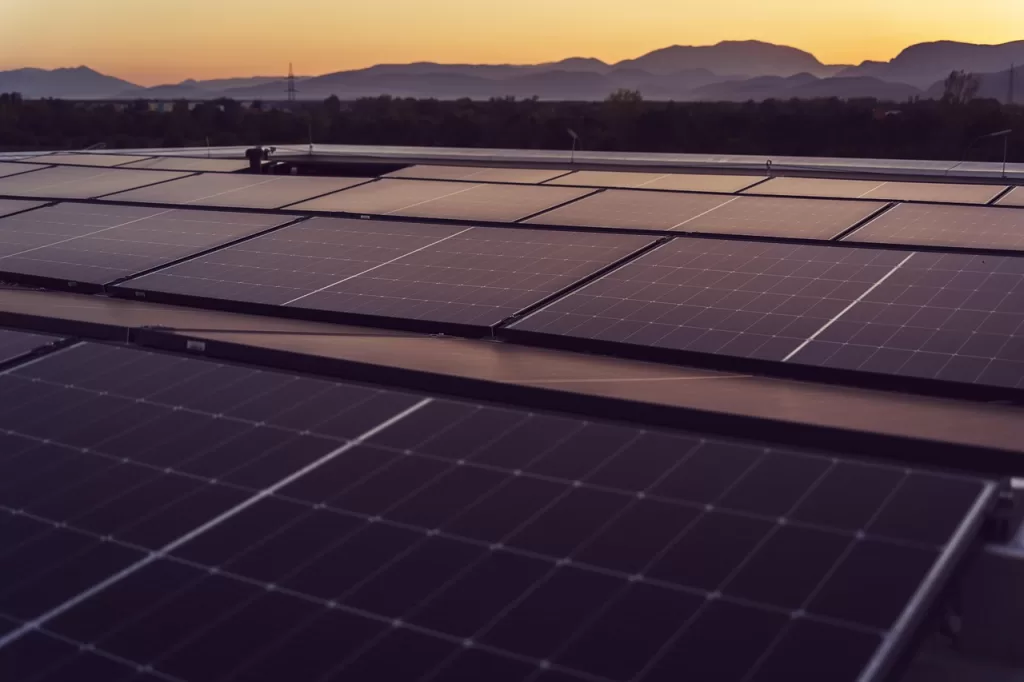
3.4 Module-Level Safety Technology: Moving Toward Mandatory Deployment
Module-Level Rapid Shutdown (MLRS) is gradually transitioning from a “recommended option” to a mandatory requirement in Europe, especially in the following project types:
-
Rooftop and High-Density Building Projects
Due to limited space and complex fire scenarios, many countries recommend that these projects prioritize MLRS devices to quickly cut off module current in the early stages of a fire and prevent its spread.
In Germany, although not yet mandated nationwide, many large EPCs and insurance providers consider shutdown capability a key risk evaluation factor, and some municipal projects have made it a bidding requirement. -
BIPV Systems and Multi-Story Building Applications
In Italy and France, building-integrated photovoltaics (BIPV) are growing rapidly, particularly in urban redevelopment and green certification projects, where stricter fire safety requirements apply.
Italy mandates that modules used for facades and curtain walls must meet Class A or UNI9177 Class 1 flame resistance, and recommends the integration of “rapid shutdown + thermal monitoring” mechanisms in fire safety approvals. -
EU Policy Trends
The EU is currently evaluating the incorporation of SunSpec, CE, and similar module-level safety standards into building access frameworks. These are expected to become mandatory under future updates to the Construction Products Regulation (CPR) or PV installation directives.
Trend Outlook:
While most countries are currently in a “semi-mandatory” or policy-guided phase, with increasing PV density and rising challenges in urban fire response, it is expected that within the next 3 to 5 years, “module-level shutdown + system fire certification” will become a required condition in the approval process for most countries.
4. How to Prevent Fires During Routine Operation and Maintenance
Even if a PV system is designed with high safety standards, aging, loosening, and corrosion are inevitable over time. Without regular maintenance, these issues can easily lead to electrical faults and even fires. To address this, many European countries have incorporated fire prevention inspections into PV O&M (Operation and Maintenance) protocols, requiring that fire safety measures be implemented both in compliance certifications and routine maintenance. Below are the key fire prevention measures:
4.1 Regular Inspection of Critical Components
-
Check for looseness, deformation, dust buildup, or corrosion in heat-prone components such as junction boxes, connectors, and combiner boxes.
-
Use infrared thermography to periodically detect hot spots and abnormal temperature rises at cable joints, providing early warnings for potential overheating.
-
Replace aging inverters, cables, and terminals in a timely manner to prevent insulation failure and increased contact resistance.
4.2 Clearing Combustibles and Ensuring Ventilation
-
Regularly remove dry leaves, dust, bird nests, and other combustible materials from rooftops and around mounting structures to reduce the risk of external ignition.
-
Ensure good ventilation around inverters and combiner boxes to prevent equipment overheating due to poor heat dissipation.
-
For large ground-mounted power plants, establish firebreaks or gravel layers to effectively block potential fire spread paths.
4.3 Establishing Maintenance Records and Early Warning Mechanisms
-
Digitally record all inspection and maintenance activities to form a closed-loop fault management system.
-
Utilize module-level or string-level monitoring platforms to track equipment status in real time and quickly locate anomalies.
-
For projects connected to municipal fire systems, ensure that emergency shutdown devices and early warning systems are properly linked and regularly tested.
5. Diverging Policies and Emerging Regulatory Trends Across Europe
As fire prevention technologies continue to mature, many European countries have incorporated PV fire safety into their building codes and electrical standards. Fire compliance is increasingly becoming a critical requirement for project approval and insurance eligibility. Current differences between countries mainly lie in their building regulations, approval processes, and coordination with fire departments:
Italy
-
Italian building regulations (such as UNI 9177) specify fire resistance requirements for BIPV systems. Modules must pass Class 1 flame resistance testing to be used on building façades or rooftops.
-
Projects above 20 kWp must submit system wiring diagrams and shutdown plans, with local fire departments (Vigili del Fuoco) involved in approval and final inspection. Required documents include wiring layouts and descriptions of shutdown design.
Germany
-
For residential and historical district projects, integration with the building’s fire protection system is mandatory. If no remote shutdown or voltage indicator is included, the project may be denied approval.
-
Electrical standards such as DIN VDE 0100-712 provide detailed guidance on cable routing, protection levels, and insulation material requirements, with strict enforcement.
France
-
Under the guidance of CRE (Energy Regulatory Commission), France is gradually standardizing technical specifications for PV systems.
-
Projects above 100 kWp, or those located in town centers, schools, hospitals, or other high-traffic areas, must be equipped with emergency shutdown pathways and module-level monitoring systems, and are subject to separate municipal approval.
6. How to Respond Correctly When a Fire Occurs
When a fire breaks out at a photovoltaic power plant, the situation is often more complex than in ordinary buildings. Even if the grid power is cut, PV modules will continue generating electricity during the daytime, keeping the system energized for an extended period. This is especially true for rooftop or BIPV systems, where the fire source may be dispersed and the shutdown path unclear, increasing the risk of fire spread and obstructing rescue efforts. Therefore, emergency response in PV plants must be not only swift but also guided by a clear and executable action plan.
6.1 Disconnect Power Immediately
-
Prioritize activation of DC-side emergency shutdown devices or module-level shutdown systems to prevent current from feeding the fire area.
-
If the system is equipped with remote shutdown functionality, on-site personnel should execute the shutdown immediately after confirming the fire, minimizing the live area of the plant.
-
For systems without shutdown protection, manual disconnect switches must be installed in clearly marked areas on site, and staff must be trained in their use.
6.2 Use Appropriate Firefighting Equipment
-
Never use water or foam directly on modules or inverters.
-
Dry powder or CO₂ extinguishers are recommended, and a minimum safety distance from live equipment must be maintained (e.g., for voltages under 10 kV, at least 0.4 meters).
-
If high-voltage equipment catches fire, a safety perimeter should be established. Without proper insulation gear, personnel must not approach DC circuits.
6.3 Provide Clear Guidance to Firefighters
-
If the fire cannot be controlled internally, immediately call the local fire department and clearly communicate the electrical hazards present.
-
System wiring diagrams, key switch locations, and shutdown instructions should be posted visibly on site to help external responders quickly understand the situation and avoid electric shock or secondary accidents caused by incorrect actions.
7. Conclusion
As photovoltaic systems become increasingly widespread across Europe, fire safety is emerging as a key factor influencing both project approval and long-term returns. Proactive protection during the design phase, standardized management during operation, and clear response mechanisms in the event of a fire are no longer optional—they have become essential requirements. Governments and insurance providers are gradually establishing supporting technical certifications and risk assessment systems.
For project developers, EPC contractors, and end users alike, strengthening awareness of fire risks and implementing fire safety measures at every stage is not only fundamental to protecting valuable assets, but also critical to ensuring the sustainable development of the entire PV industry.
Since 2008, Maysun Solar has been both an investor and manufacturer in the photovoltaic industry, providing zero-investment commercial and industrial rooftop solar solutions. With 17 years in the European market and 1.1 GW of installed capacity, we offer fully financed solar projects, allowing businesses to monetize rooftops and reduce energy costs with no upfront investment. Our advanced IBC, HJT and TOPCon panels, and balcony solar stations, ensure high efficiency, durability, and long-term reliability. Maysun Solar handles all approvals, installation, and maintenance, ensuring a seamless, risk-free transition to solar energy while delivering stable returns.
Reference:
Mannheimer Versicherung. Fire incidents in photovoltaic systems – Insurance insights. Retrieved from https://solar.huawei.com/admin/asset/v1/pro/view/31d024f4d0604188b48f323e5413ef20.pdf
National Electrical Code (NEC) 690.12 – Rapid Shutdown Requirements. Retrieved from https://codes.iccsafe.org/s/ISEP2018/national-electrical-code-nec-solar-provisions/ISEP2018-NEC-Sec690.12
Hanersun. All Module Series Obtains Class 1 Fire Safety Certification for the Italian Market (UNI 9177). Retrieved from https://www.hanersun.com/hanersuns-all-module-series-obtains-class-1-fire-safety-certification-for-the-italian-market/?utm_source=chatgpt.com
Datacenter Dynamics. Fire rages through Apple’s data center HQ in Mesa, Arizona. Retrieved from https://www.datacenterdynamics.com/en/news/fire-rages-through-apples-data-center-hq-in-mesa-arizona/
You may also like:
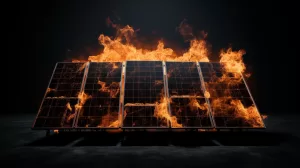
Photovoltaic Fire Safety Guide: How to Reduce the Risk of Power Plant Fires?
The risk of fire in photovoltaic power plants is on the rise. This article, based on European policy standards, provides a detailed explanation of design optimization, operation and maintenance strategies, and emergency response measures to enhance fire safety levels.
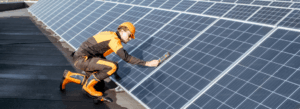
How to Design Low Maintenance High Yield Commercial and Industrial Photovoltaic Systems
How to build low-maintenance high-return photovoltaic plants This article analyzes the cost challenges and optimization paths of commercial and industrial photovoltaics in Europe helping enterprises achieve payback within 5–6 years and steadily increase long-term returns
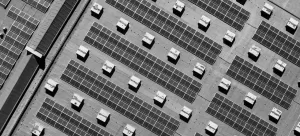
How Building-Integrated Photovoltaics (BIPV) is Changing the Commercial and Industrial Rooftop Solar Market
BIPV in Europe is reshaping the landscape of commercial and industrial rooftop photovoltaics, integrating building and power generation functions while offering policy incentives, economic returns, and ESG value. This article analyzes the advantages of BIPV in technological innovation, business models, and investment returns, helping enterprises seize the opportunity for green transformation.

How to Effectively Clean and Intelligently Maintain Photovoltaic Systems for Optimal Performance?
Explore how scientific cleaning and intelligent maintenance can ensure the efficient operation of commercial and industrial photovoltaic systems. Practical advice covers module cleaning frequency, monitoring system configuration, and long-term strategies for energy savings and performance enhancement.

2025 European Photovoltaic Policy Map: Deployment Paths and Regional Strategies for Commercial and Industrial Photovoltaics
A comprehensive analysis of the 2025 European commercial and industrial photovoltaic policy map, focusing on deployment strategies, incentive comparisons, and zero-investment models to support businesses in achieving an efficient and green transition.

Empowering Factories with Solar Energy A Strategic Tool for Controlling Production Electricity Costs
Commercial and industrial solar is becoming a key solution for factories to reduce electricity costs and hedge against price fluctuations. This article systematically analyzes its deployment models, cost advantages, and sustainable value pathways.

